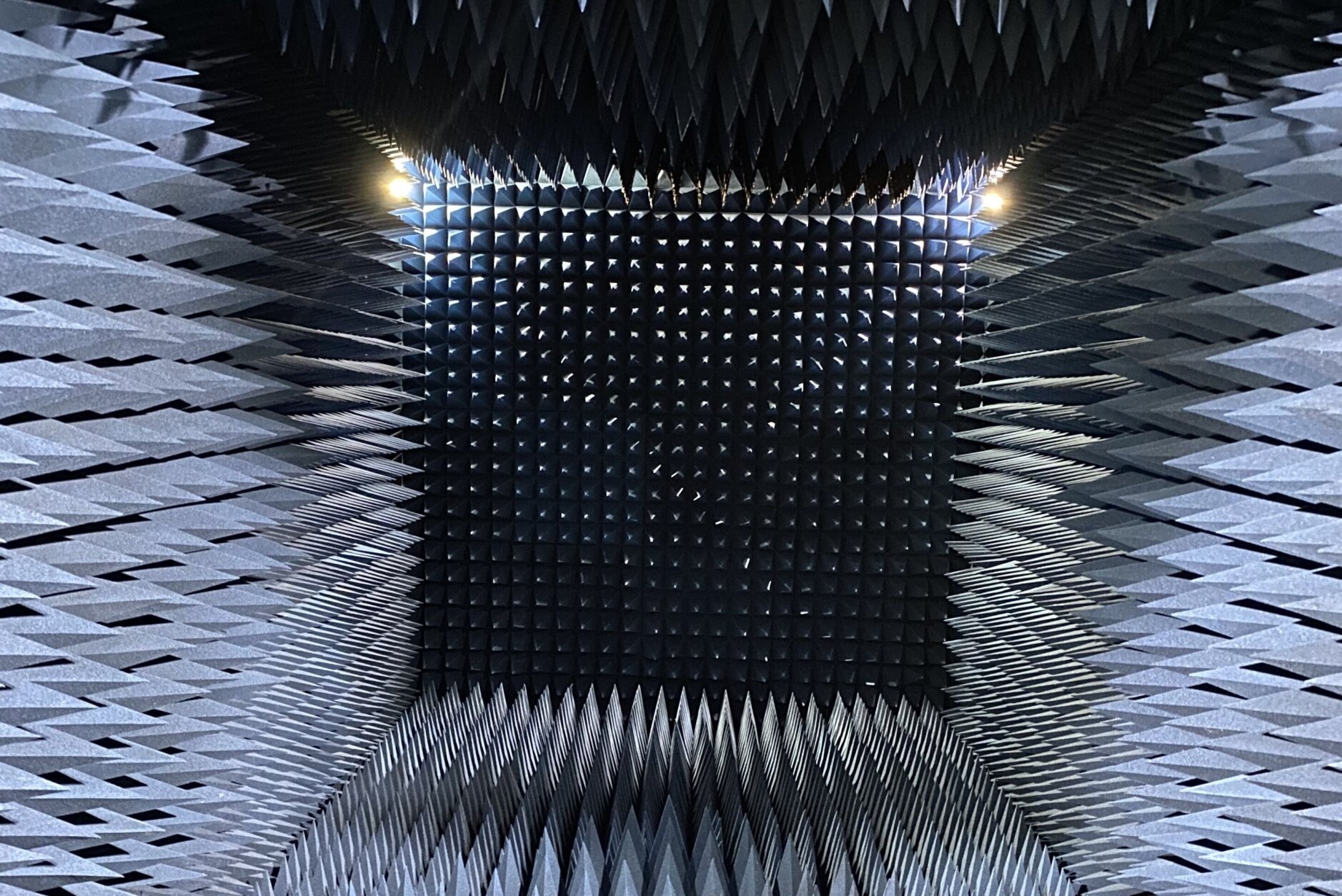
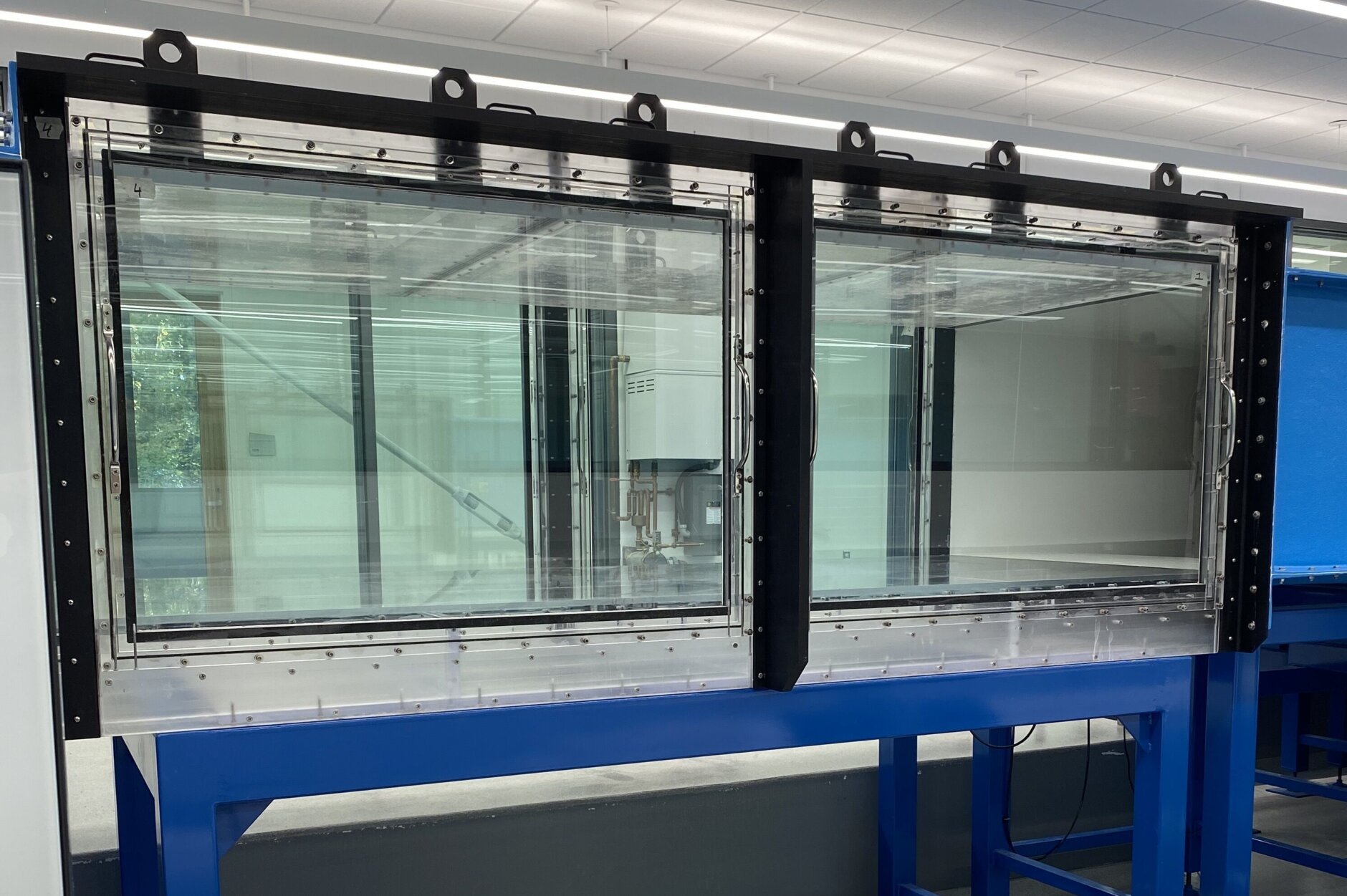
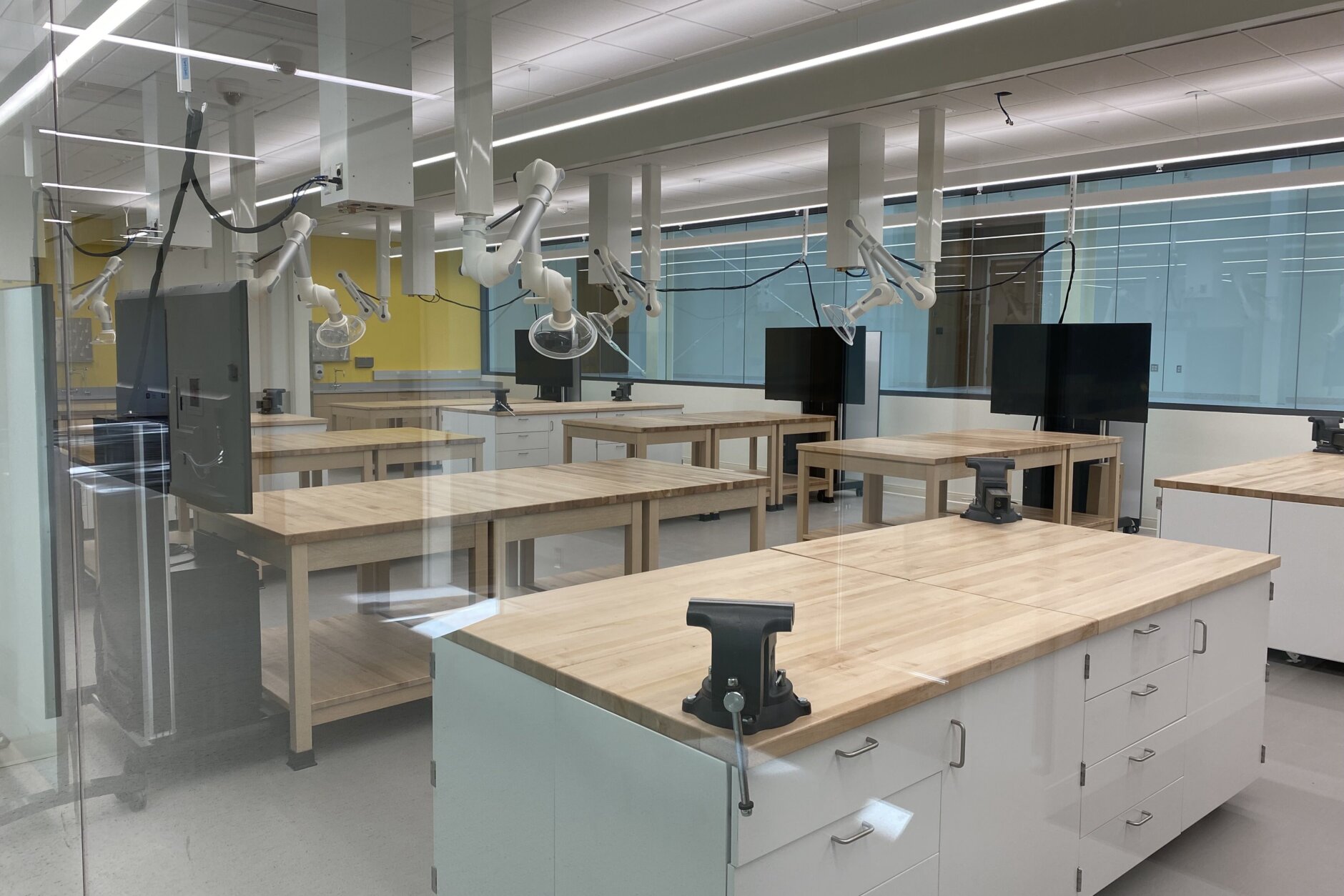
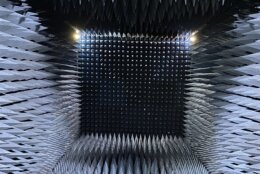

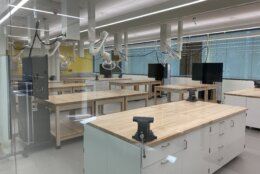
Future developments on drones and other unmanned systems could come from a new, high-tech facility in California, Maryland.
The Southern Maryland Autonomous Research and Technology at the University System of Maryland at Southern Maryland boasts an $86 million, 84,000-square-foot facility featuring a giant cubic room with 50-foot sides for testing drones.
“This is the largest facility like this, probably on this whole coast,” said Joshua Gaus, a project engineer with the University of Maryland Unmanned Aircraft Systems Test Site.
The new test area is isolated from radio interference and filled with tracking cameras. It’s perfect for testing things like drone swarms, Gaus said. The building is set to begin opening in January, with things getting into full swing next fall.
Matt Scassero, director of research, innovation and outreach for the University of Maryland Clark School of Engineering and the University System of Maryland at Southern Maryland, envisions the campus being part of a larger “autonomy corridor,” noting their proximity to Naval Air Station Patuxent River.
This video is no longer available.
Testing won’t be limited to drones, either.
“Ground, water systems, air systems, space … we can do that research here. We can do the education that leads into the research,” Scassero said. “This is a game changer for us down here in this region.”
The goal is to spur economic activity and job growth.
“We have this enormous demand for programs,” said USMSM Executive Director Eileen Abel. “If we can get some of these under-resourced students to understand the value of completing a bachelor’s degree where there is a guaranteed job on the backside, the better it is to sustain these communities … and to lift families out of poverty.”
She adds that while the new facilities are primarily for students at the campus, students from other institutions will likely come in to do research as well.
“I think it’s perfect, really. I would say it’s the most state-of-the-art lab I’ve seen so far,” said Adarsh Jagan Sathyamoorthy, a doctoral student at the University of Maryland, who, along with fellow student Kasun Werakoon and research assistant Utsav Patel, brought in a human-seeking, water and mask-dispensing ground robot.
“I think many students from the College Park campus would love to come down here.”








